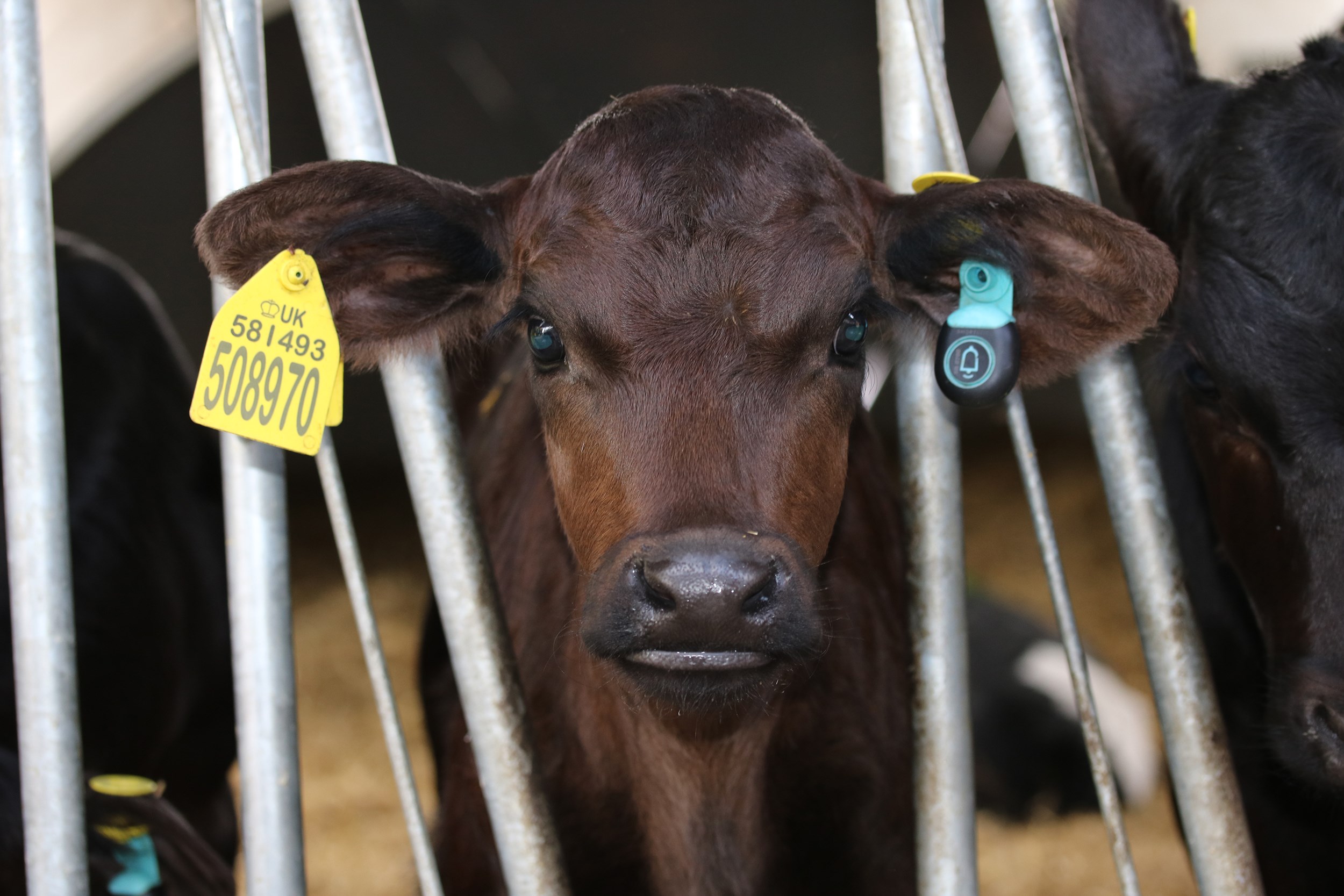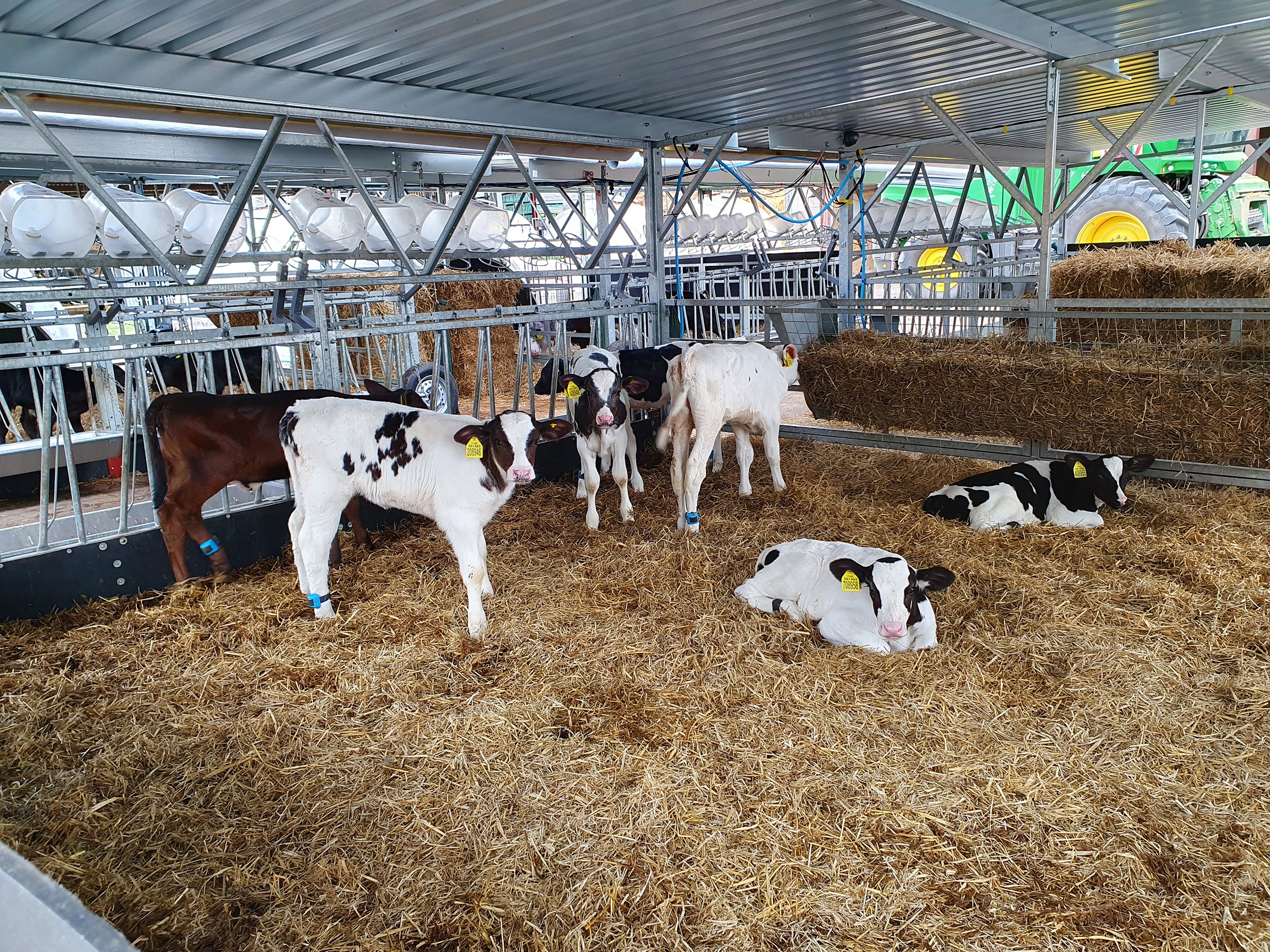Langhill breeding study
The project's database provides 40 years' worth of scientific records for research.

The Langhill breeding experiment was established in the early 1970s and still continues to operate at the SRUC Dairy Research Centre at Crichton Royal Farm, Dumfries.
The genetic lines of the cattle have been selected on the basis of fat plus protein yield (maximum versus national average) for over four decades and the study also includes contrasting management strategies (currently feeding systems based on either 1.5 or 4.5 tonne of concentrate per cow per annum).
The Langhill database provides over 40 years’ worth of records that scientists can access, alongside the ongoing research in this facility and this invariably adds value to research conducted at the Centre. The extensive database incorporates all animal performance, fertility and health records, as well as field records. Linkage with field, soil, weather and herbage records is an important strength for many projects.
Langhill projects
50 years and counting: the longest running genetic selection experiment
The Langhill study is the longest running genetic selection trial worldwide. The Langhill cow herd was established in 1973 and was designed to accommodate two equally sized genetic selection lines (around 100 cows each). These included a 'control line', consisting of daughters of sires of average genetic merit available in the UK, and a 'select line', sired by high genetic merit bulls for milk component (fat and protein) yield.
We have closely monitored all animals on the farm and have recorded individual data on a continuous basis in order to examine the impact of selecting for increased milk component yield on overall cow performance.
In 1988 we introduced two production system groups (high versus low input) to the design. This evolved over time to reflect changing practices with regards to animal feeding and grazing. Cows from the two genetic lines are now equally divided into the two production system groups in a design that allows the study of the interaction between animal genetics and environment. We have conducted a multitude of scientific research studies over the past decades using the unique data generated on the farm.
Download the information leaflet more information.

Using animal behaviour to detect disease in cattle
Ill-health in animals and humans is accompanied by changes in behaviour, such as loss of appetite and lethargy. A study by Gonzalez et al (2008) using data from our Langhill herd was one of the first studies to show that changes in behaviour could be used to detect disease in an on-farm setting.
Gonzalez coupled data from the Langhill database on feed intake patterns with cow health records. Further work had been done to determine whether changes in feeding behaviour and activity can be used to detect respiratory disease in calves.
Download the information leaflet more information.
Biomarkers to improve cow longevity
As most of the traits determining the length of a cow’s productive life are manifested during her mature years, an early-life predictor of the cow’s future would be an extremely useful tool for on-farm management practices and selective breeding programmes.
Our research evaluated early-life biomarkers as predictors of cow longevity. We examined:
- the length of telomeres, which are small structures capping the chromosome ends in animal cells, and are known to be associated with ageing
- the profiles of blood circulating microRNAs, which are molecules associated with various important biological functions
We accessed the length of telomeres from white blood cells and the expression of 300 microRNAs in plasma in young female calves born into the study before 2016. These measurements were then associated with mature-life performance and longevity of these animals
Download the information leaflet more information.
Lameness in dairy cows: Helping to unravel the mystery of claw horn lesions
We carry out comprehensive data recording of mobility score, hoof lesions and clinical lameness as standard for the Langhill herd. This data, in combination with milk recording and body condition score data, has provided a uniquely detailed resource for further analysis. Studies using this data have examined the effect of heifer lameness in first lactation on future lameness and culling risk, and the wider contribution of previous lameness events on the overall occurrence of lameness in dairy herds.
We also investigated the link between low body condition score (BCS) and lameness risk based on information from 724 cows in the Langhill herd over eight years. We collected feet from cull cows from the Langhill herd for detailed dissection, CT and MRI scanning.
These studies have examined the degree of bony change to the pedal bone and changes to the digital cushion within the foot in relation to lifetime mobility score clinical lameness history. Outputs from this research have enabled significant advances in how claw horn lesions develop over time and are hard to fully cure.
Download the information leaflet more information.
Greenhouse gas emissions: A dairy systems approach
We gathered dairy production systems data from diverse lines of Holstein Friesians, managed on a range of diets, during several phases of the Langhill study. The dataset provides a unique resource to allow life cycle assessment (LCA) and modelling of greenhouse gas emotions (GHGs) associated with the production of milk within different feeding and housing regimes.
The research focussed on assessing differences in GHG emission types stemming from high production and UK average production cows managed within low forage and by-product housed, and high forage and homegrown grazed dairy systems. GHGs were calculated using SRUC's Agrecalc carbon foot-printing tool.
We determined the effect of introducing homegrown legumes and co-product feeds and carried out further investigations to determine the effect of nutritional quality brought about through changes in diet digestibility and dietary crude protein (CP).
Download the information leaflet more information.

Greenhouse gas emissions from grasslands
Our Crichton Dairy Research Centre has provided a crucial platform for measuring emissions of greenhouse gases (GHGs) associated with dairy production. The work has focussed on measurements of the GHG nitrous oxide, which is released from soils following the application of nitrogen-based fertilisers and manures.
We undertook a series of experiments in which differing amounts and forms of nitrogen fertilisers, animal excreta and manures were applied to grasslands and made measurements over a period of at least a year of the amounts of nitrous oxide released.
Other studies explored mitigation approaches that could be used to reduce emissions, including varying the rate and timing of nitrogen applications, and the use of inhibitors.
Download the information leaflet more information.
Sub-Saharan Africa links to Langhill dairy research
This research has been aimed at the smallholder supply chain with the use of long-term breeding data from the Langhill database, along with soils and forage interactions. It is meant to improve crop sustainability and yields, and milk production and quality in sub-Saharan Africa.
Knowledge gained on a practical level from the Langhill work has been used to enhance the output of African smallholder’s crop yields, forage use, animal production and herd fertility. This has been in conjunction with the training of PhD students.
Download the information leaflet more information.
Seeking sustainable intensification in dairy systems
The Langhill herd’s homegrown system provided a test to explore the feasibility of achieving sustainable intensification in dairy systems.
To maintain good milk yields dairy cows need specific concentrations of carbohydrates, fats and proteins. In homegrown systems these needs are met from a variety of crops grown on-farm. Dietary modelling identified several different crop combinations that could support a high-yielding dairy herd. The land area to deliver these diets varied due to productivity and nutritional differences between crops, with more efficient systems generating spare land. We investigated production and biodiversity across scenarios with differing crop, land area and potential surplus land (and its potential utilisation).
Download the information leaflet more information.
Related content

Dairy Research and Innovation Centre

